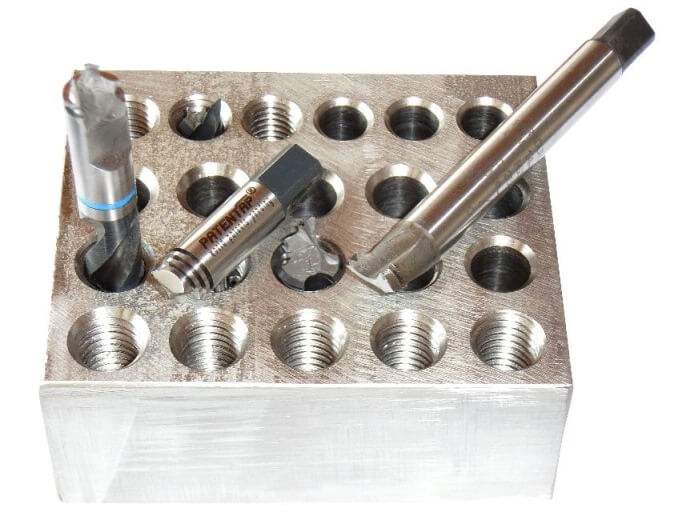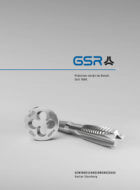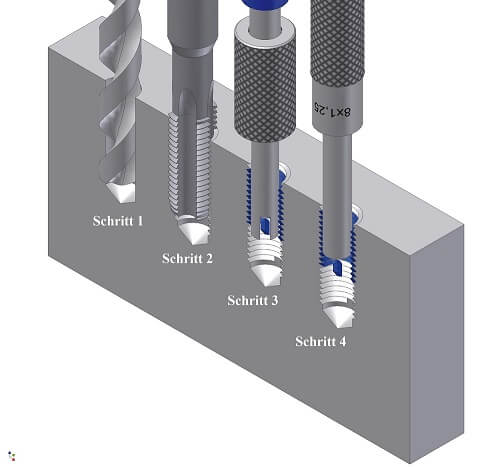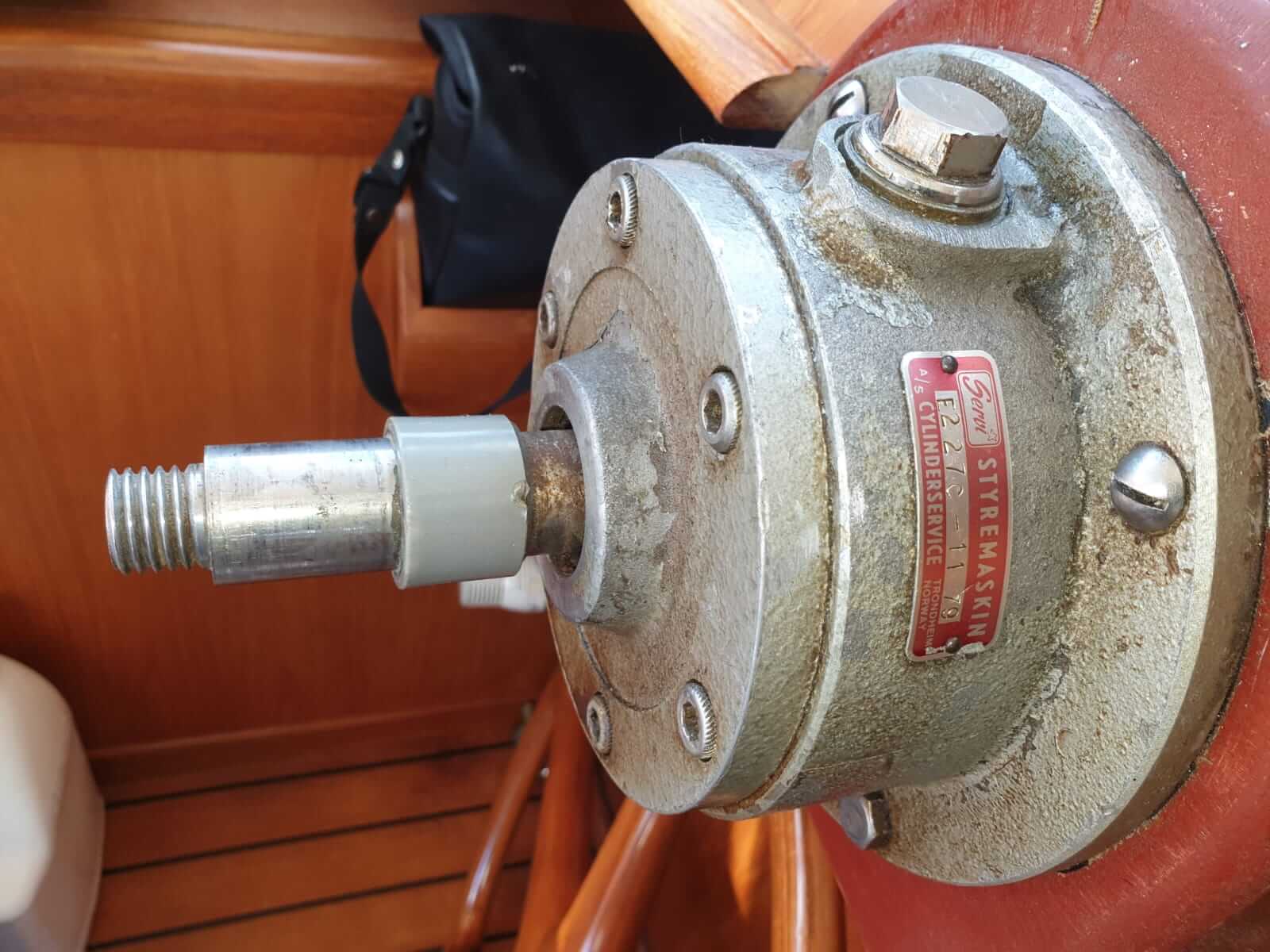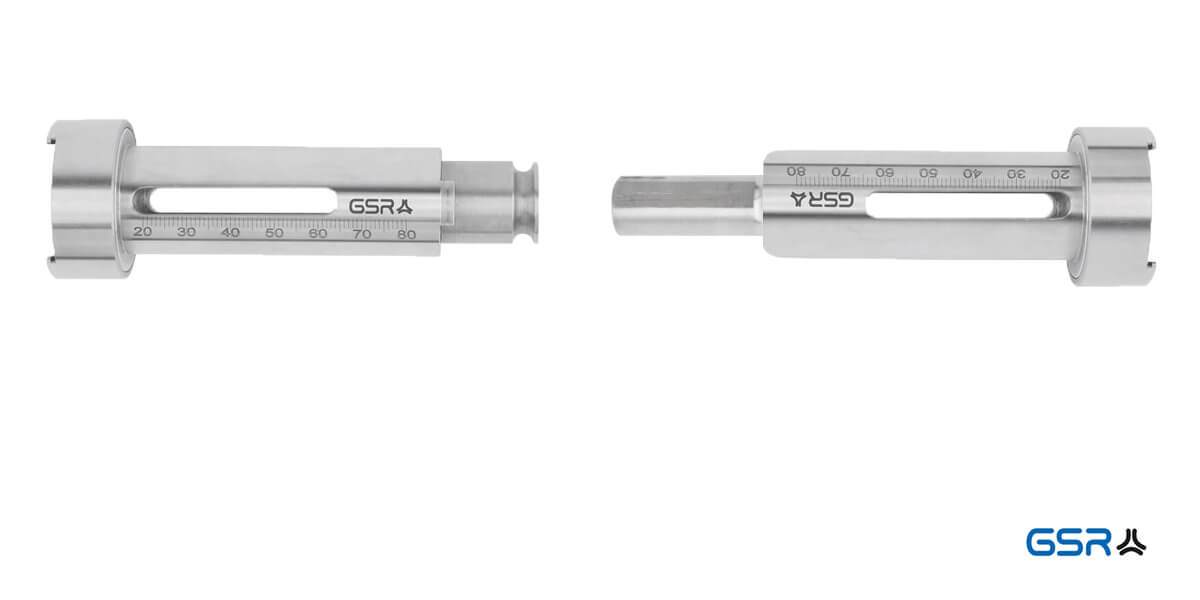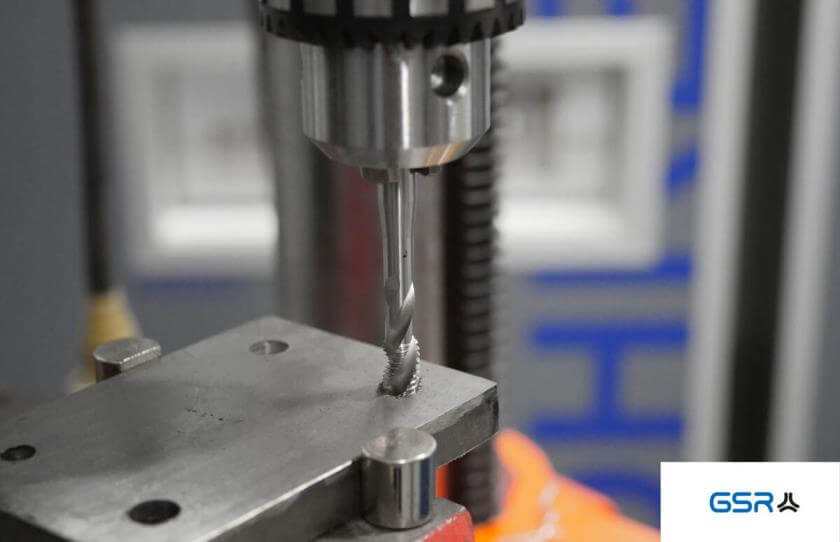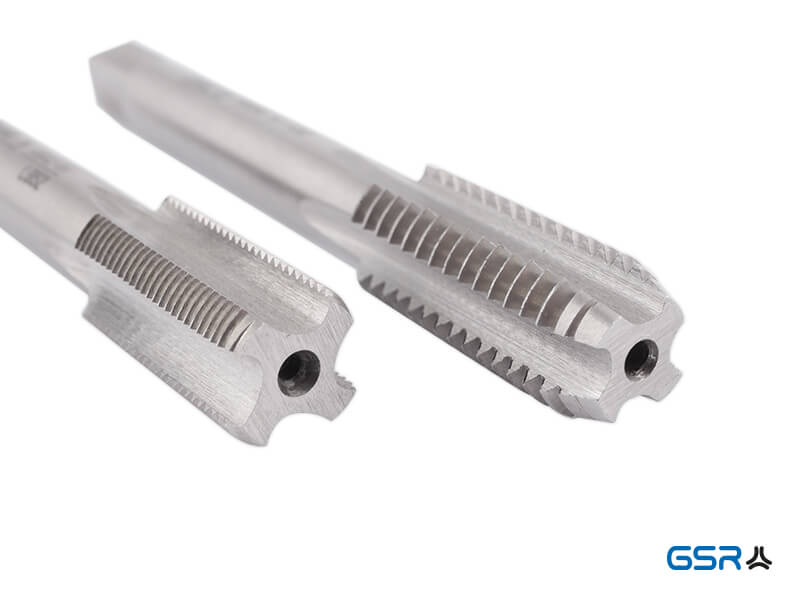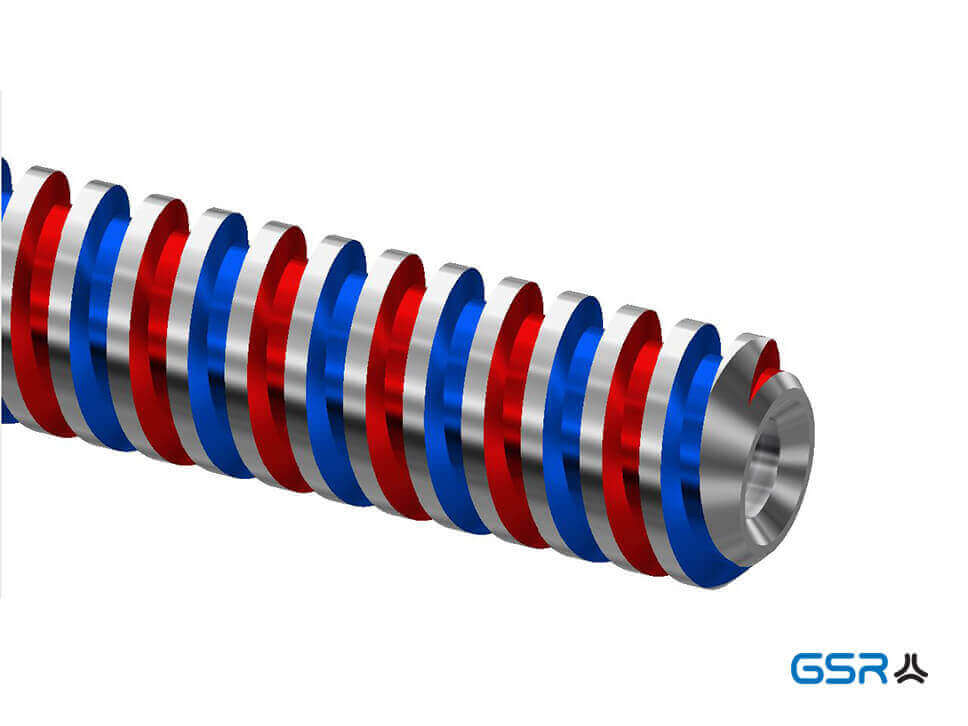
PATENTAP presents its new tap:
The function of the tool is simple and safe: If the tool breaks, the new tap does not break at the unfavourable point directly above the drill hole, as is usually the case, but at a safety cut-off point in the middle of the shank which has been pre-calculated for such a case. The progressive torque curve controls the breaking torque, which is calculated exactly to N/m, and guides the breakage upwards if a complication occurs during tapping. This means that it can be easily unscrewed again at the emergency key attachment remaining behind the break. Whether in machine and automatic operation on machining centres or when threads are machined by hand: In the event of any complications occurring during thread cutting, the cut-off gate intervenes milliseconds earlier – even before the tap would inexorably break off at the lower end directly above the workpiece, as has been the case up to now.
The result is obvious: no more workpiece and machine damage due to uncontrollable tap breakage, but controlled breakage at the cut-off gate to save the workpiece. Tedious and costly repairs of expensive parts are no longer necessary. The new type of tap banishes the well-known risk associated with thread cutting from companies and thus reduces manufacturing costs.
Higher cutting performance
For machine thread cutting, the newly developed safety disconnect coupling promotes
the tap into the core hole independently of the machine feed and monitors the entire machining process in rapid reaction. If the tap breaks in the millisecond range, it separates the drive feed and the remaining part of the tap that is stuck in the workpiece. This prevents the machine drive, which would otherwise continue to advance, from separating the remaining part of the tap that is now stuck in the workpiece.
Bohrers would crush a moment later. The safety tap also offers
more cutting performance, as it does not need to be replaced at the usual performance limit before a foreseeable breakage. It remains in the machine and cuts until it breaks. Then it is simply unscrewed, the thread remains true to gauge and the machining part is undamaged.
You can find further information
here
www.PATENTAP.com
